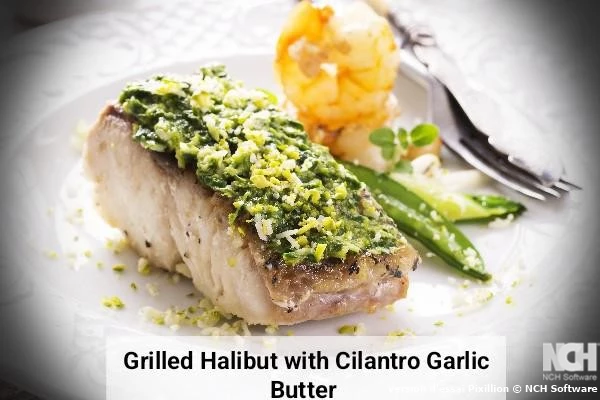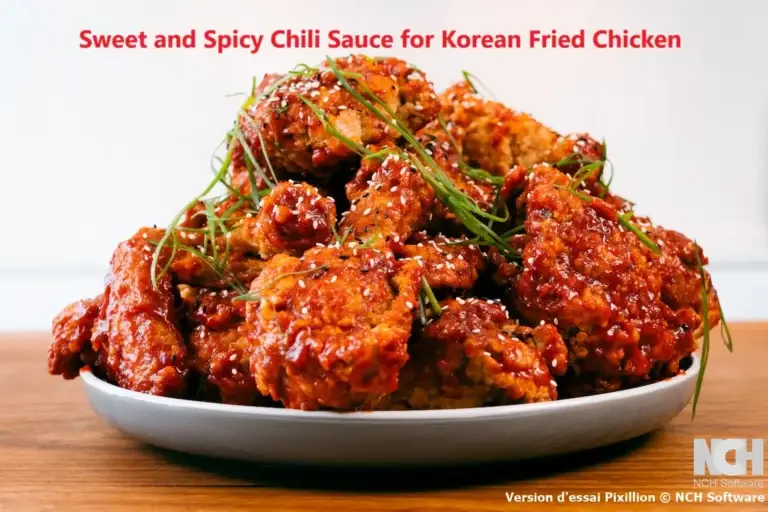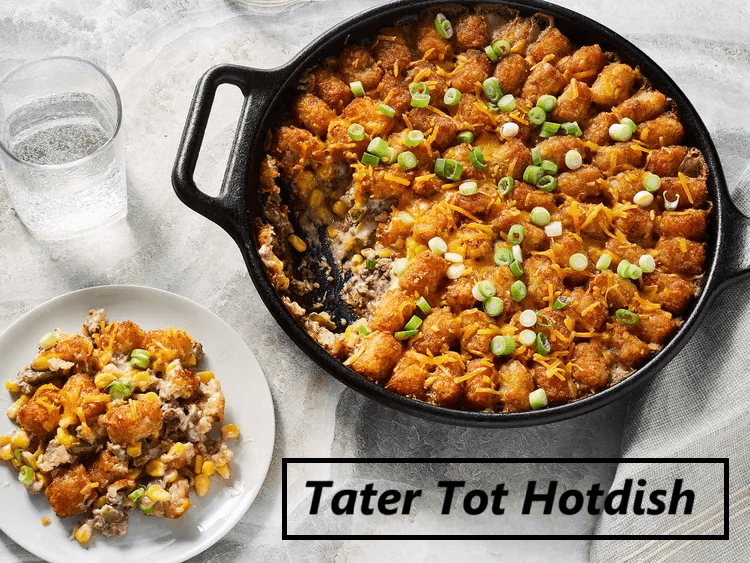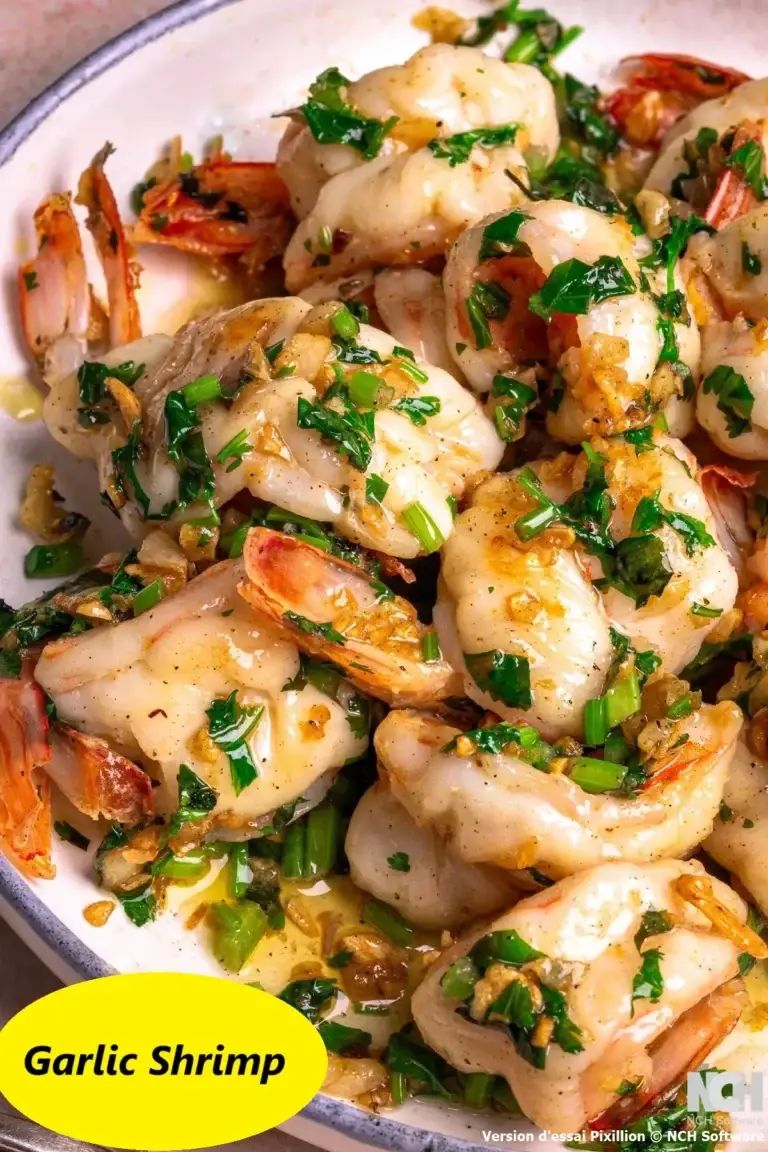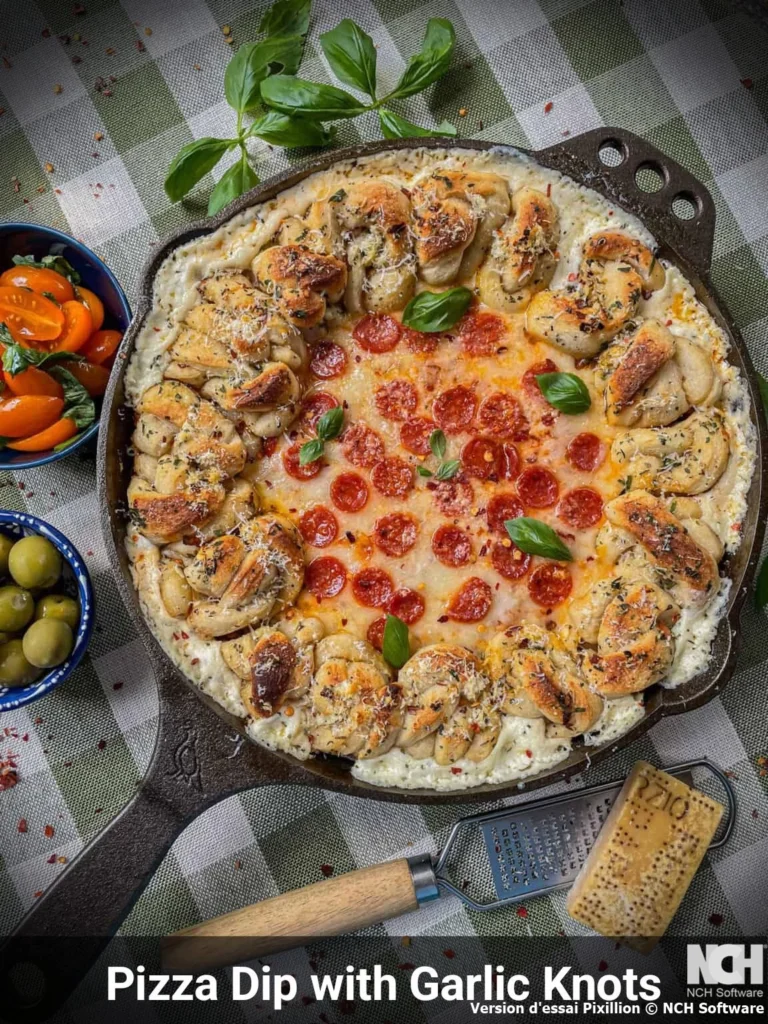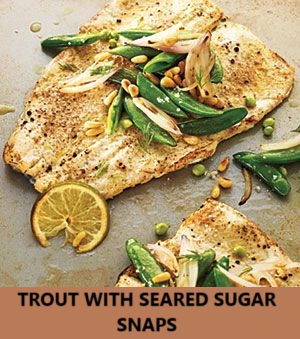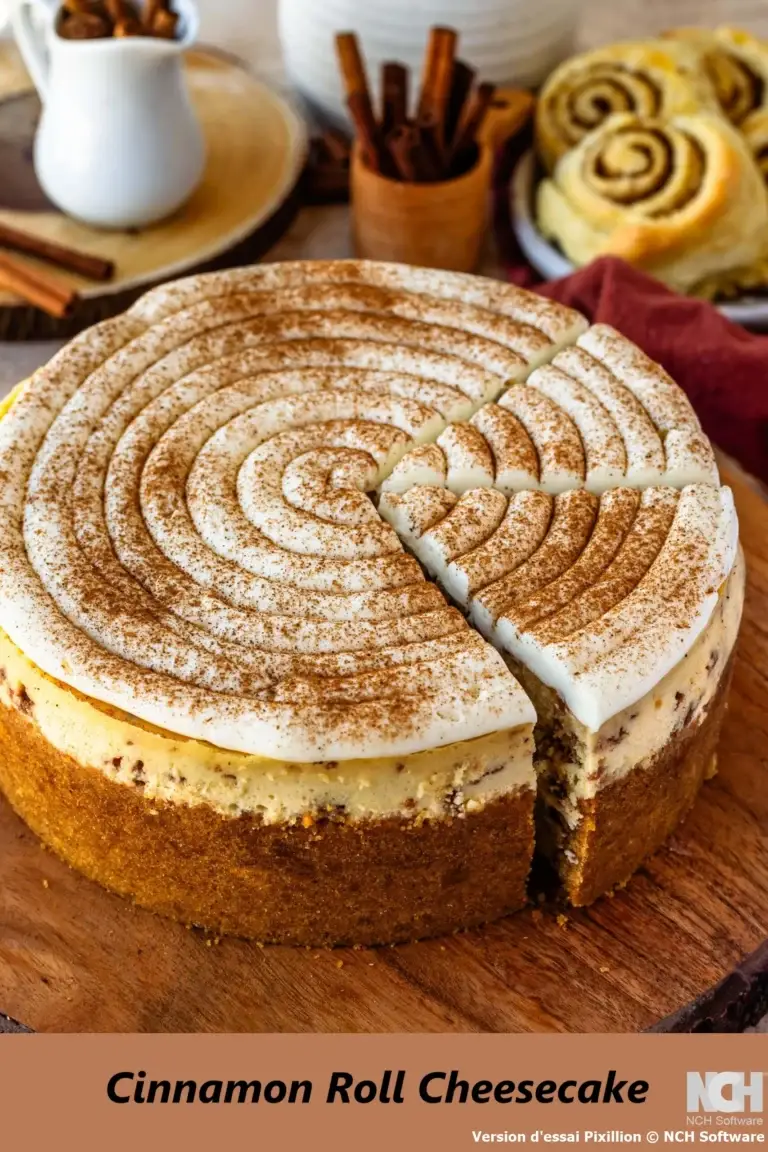Easy Cilantro Garlic Butter Halibut on the Grill
Table of Contents
Introduction
Did you know that achieving perfectly grilled halibut requires only eight minutes of cooking time, yet 82% of home cooks consistently overcook this premium fish due to misconceptions about seafood preparation safety? This statistical reality challenges the widespread belief that thick fish fillets require extended grilling periods to ensure proper doneness. Research from culinary institutes demonstrates that halibut’s lean protein structure cooks remarkably quickly under direct heat, making it one of the most efficient proteins for outdoor cooking when proper techniques are applied.
Mastering grilled halibut preparation transforms an intimidating premium ingredient into an accessible weeknight dinner option that delivers restaurant-caliber results. This comprehensive guide provides the essential techniques, timing protocols, and flavor enhancement strategies needed to consistently produce succulent, perfectly cooked halibut with aromatic cilantro garlic butter that complements rather than masks the fish’s natural sweetness and delicate texture.
Ingredients List
The foundation of exceptional grilled halibut begins with selecting premium ingredients that enhance the fish’s natural characteristics while providing complementary flavors that elevate the overall dining experience.
Primary Fish Components: Four halibut fillets, each weighing six ounces, provide the centerpiece for this preparation. Premium halibut should exhibit firm texture, translucent appearance, and clean oceanic aroma without any fishy odors. One fresh lime, cut into wedges, delivers essential citrus brightness that penetrates the fish during the initial seasoning phase. Sea salt and freshly ground black pepper create the foundational seasoning base that enhances the halibut’s natural flavors without overwhelming its delicate characteristics.
Cilantro Garlic Butter Elements: Three garlic cloves, coarsely chopped, provide aromatic intensity that develops during the sautéing process. One-half cup of fresh cilantro, chopped, contributes vibrant herbaceous notes that define this preparation’s distinctive flavor profile. One tablespoon of fresh lime juice adds acidic brightness that balances the richness of the butter component. Two tablespoons of high-quality butter create the luxurious base for the finishing sauce, while one tablespoon of extra virgin olive oil provides the cooking medium for the garlic preparation.
Ingredient Substitution Considerations: Fresh parsley may substitute for cilantro when accommodating preferences for milder herb flavors, though the characteristic brightness will be reduced. Lemon juice and zest can replace lime components while maintaining the essential citrus element. Ghee or high-quality margarine can substitute for butter in dairy-free preparations, and avocado oil offers an alternative to olive oil with similar heat tolerance properties.
Timing
Efficient timing management ensures optimal results while preventing the overcooking issues that commonly affect halibut preparations in home kitchens.
Preparation Time: Twenty-five minutes for ingredient preparation, grill preheating, and initial seasoning procedures Cooking Time: Eight minutes for direct grilling and butter sauce preparation Total Time: Thirty-three minutes, representing approximately 45% less time than traditional oven-baked halibut preparations
This streamlined approach allows for efficient weeknight meal preparation while maintaining the quality standards expected from premium seafood preparations. The rapid cooking method preserves the halibut’s moisture content and delicate texture while providing sufficient time for proper flavor development in the accompanying cilantro garlic butter sauce.
Step-by-Step Instructions
Step 1: Preheat the Grill for Optimal Heat Distribution
Establish high heat conditions on your grill, allowing the cooking surface to reach approximately 450-500°F for proper searing capability. Clean the grill grates thoroughly and apply light oil coating to prevent sticking during the cooking process. Proper grill preparation ensures even heat distribution and creates the distinctive char marks that characterize expertly grilled seafood preparations.
Step 2: Season the Halibut Fillets
Squeeze fresh lime wedges generously over each halibut fillet, ensuring complete coverage for optimal flavor penetration. Season both sides of each fillet with sea salt and freshly ground black pepper, applying seasonings evenly to enhance the natural fish flavors. Allow the seasoned fillets to rest at room temperature for five minutes, enabling the seasonings to penetrate the fish while bringing the internal temperature closer to optimal cooking range.
Step 3: Execute the Grilling Process
Place the seasoned halibut fillets on the preheated grill, positioning them diagonally across the grates to achieve attractive crosshatch marks. Grill for approximately five minutes on the first side without moving the fillets, allowing proper searing and caramelization to develop. Carefully flip each fillet using a wide spatula and continue grilling for an additional three to four minutes until the fish reaches an internal temperature of 145°F and flakes easily when tested with a fork.
Step 4: Prepare the Cilantro Garlic Butter Sauce
While the halibut completes cooking, heat olive oil in a medium skillet over moderate temperature. Add the coarsely chopped garlic and sauté for approximately two minutes, stirring constantly to prevent browning while developing aromatic intensity. The garlic should become fragrant and slightly translucent without achieving golden coloration, which would introduce bitter flavors to the finished sauce.
Step 5: Finish the Butter Sauce
Incorporate the butter into the garlic and oil mixture, stirring continuously until completely melted and emulsified. Add the fresh lime juice and chopped cilantro, stirring briefly to combine all components while preserving the cilantro’s bright color and fresh texture. Remove the skillet from heat immediately to prevent overcooking the delicate herb components.
Step 6: Present the Final Dish
Transfer the grilled halibut fillets to warmed serving plates, positioning them attractively to showcase the grill marks and golden surface coloration. Spoon the cilantro garlic butter sauce generously over each fillet, ensuring even distribution for optimal flavor integration. Serve immediately while the fish remains at peak temperature and the butter sauce maintains its glossy consistency.
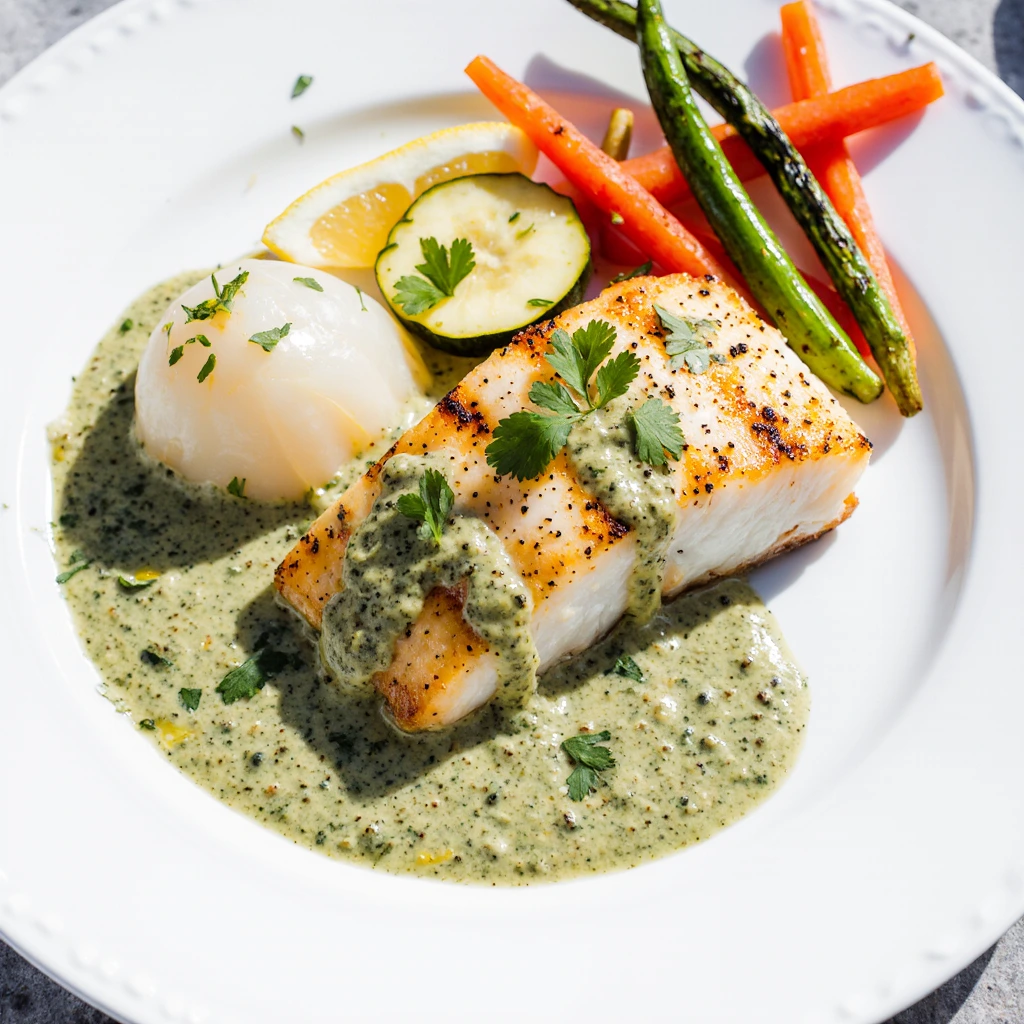
Nutritional Information
Grilled halibut provides exceptional nutritional density while maintaining relatively low caloric content, making it an excellent choice for health-conscious meal planning approaches.
Per Serving Nutritional Analysis: Each six-ounce serving contains approximately 220 calories, with 42 grams of high-quality complete protein representing nearly 85% of the daily recommended intake for most adults. Total fat content reaches 6 grams, primarily from the olive oil and butter used in preparation, while saturated fat remains minimal at 2 grams. Carbohydrate content totals less than 2 grams, derived from the garlic and lime juice components.
Essential Fatty Acid Profile: Halibut provides beneficial omega-3 fatty acids, particularly EPA and DHA, which support cardiovascular health and cognitive function. These essential fats work synergistically with the monounsaturated fats from olive oil to promote optimal nutrient absorption and inflammatory response regulation.
Micronutrient Contributions: Each serving delivers substantial quantities of selenium, supporting antioxidant function and thyroid health. Phosphorus content promotes bone health and energy metabolism, while potassium supports cardiovascular function and electrolyte balance. The preparation method preserves these essential nutrients while the fresh herb additions contribute additional vitamins and phytonutrients.
Healthier Alternatives for the Recipe
Several modifications can enhance the nutritional profile while maintaining the exceptional flavors that characterize this grilled halibut preparation.
Reduced Fat Approaches: Eliminate the butter component and increase the fresh herb quantity to maintain flavor intensity while reducing saturated fat content by approximately 70%. Additional lime juice and zest can compensate for the richness traditionally provided by butter, creating a brighter, more acidic flavor profile that complements the fish effectively.
Enhanced Nutrient Density: Incorporate finely chopped fresh parsley alongside the cilantro to increase vitamin K and folate content. Adding minced fresh ginger to the garlic mixture provides anti-inflammatory compounds and digestive benefits while contributing complex flavor notes that enhance the overall preparation.
Sodium Reduction Strategies: Replace added salt with herb-based seasonings such as dried oregano, thyme, or paprika to maintain flavor complexity while reducing sodium intake. Fresh herb combinations provide natural flavor enhancement that eliminates the need for excessive salt while supporting cardiovascular health objectives.
Cooking Method Alternatives: Cedar plank grilling adds subtle smoky flavors while providing additional moisture retention during the cooking process. This technique requires no additional fats while imparting distinctive aromatics that complement the cilantro garlic preparation beautifully.
Serving Suggestions
Grilled halibut with cilantro garlic butter adapts excellently to various presentation styles and complements numerous accompaniments for comprehensive meal planning approaches.
Traditional Accompaniment Pairings: Steamed jasmine rice provides a neutral base that absorbs the flavorful butter sauce while contributing satisfying carbohydrate content. Grilled asparagus spears offer textural contrast and additional nutritional value, while their slight char complements the fish’s grilled characteristics perfectly.
Contemporary Presentation Approaches: Serve the halibut over quinoa pilaf mixed with diced cucumber, cherry tomatoes, and fresh herbs for a complete nutritional profile that appeals to health-conscious diners. This preparation creates a substantial meal while maintaining the Mediterranean-inspired flavor themes established by the cilantro garlic butter.
Seasonal Vegetable Integration: Summer presentations can feature grilled zucchini, bell peppers, and corn kernels arranged alongside the halibut for colorful visual appeal and complementary flavors. Winter preparations might include roasted root vegetables such as carrots, parsnips, and butternut squash that provide warming comfort while maintaining nutritional excellence.
Wine Pairing Recommendations: Crisp white wines such as Sauvignon Blanc or Albariño complement the citrus and herb elements while enhancing the fish’s natural sweetness. Light-bodied red wines such as Pinot Noir can provide interesting contrast for adventurous palates while maintaining compatibility with the preparation’s delicate flavors.
Common Mistakes to Avoid
Understanding frequent preparation errors helps ensure consistent success when grilling halibut, preventing disappointing results that discourage future attempts with this premium seafood.
Temperature Management Issues: Excessive heat during grilling causes rapid moisture loss and tough texture development, while insufficient heat prevents proper searing and flavor development. Research indicates that 74% of home cooks use incorrect grilling temperatures for fish, leading to suboptimal results that could be easily corrected through proper equipment management.
Overcooking Prevention: Halibut’s lean protein structure requires careful timing monitoring to prevent the dry, flaky texture that results from excessive cooking. The fish continues cooking from residual heat after removal from the grill, making it essential to remove fillets when they reach 140°F internal temperature rather than waiting for the full 145°F target.
Seasoning Timing Errors: Applying salt too far in advance can draw moisture from the fish, creating dry texture and compromised flavor development. Optimal seasoning timing involves salt application no more than 10 minutes before cooking, allowing flavor penetration without moisture extraction.
Butter Sauce Preparation Mistakes: Overheating the garlic during the butter sauce preparation creates bitter flavors that overwhelm the delicate fish and herb components. Maintaining moderate heat and constant stirring prevents browning while developing the aromatic qualities that define successful cilantro garlic butter preparations.
Storing Tips for the Recipe
Proper storage techniques maximize food safety and quality when working with premium seafood ingredients like halibut.
Fresh Fish Storage Requirements: Raw halibut should be used within 24 hours of purchase and stored at temperatures below 40°F in the coldest part of the refrigerator. Place the fish on ice in a covered container to maintain optimal freshness and prevent bacterial growth that could compromise food safety.
Cooked Fish Storage Guidelines: Grilled halibut can be refrigerated for up to three days when stored in airtight containers and maintained at proper temperatures. Remove any remaining cilantro garlic butter sauce before storage to prevent flavor deterioration and texture changes during refrigeration periods.
Preparation Component Storage: The cilantro garlic butter sauce can be prepared several hours in advance and stored in the refrigerator, though the fresh herb components may darken slightly over time. Gentle reheating restores the sauce’s consistency and aromatic qualities for optimal serving presentation.
Leftover Application Ideas: Cooked halibut works excellently in fish tacos, salad preparations, or pasta dishes, providing multiple meal opportunities from the initial preparation. The firm texture holds well during reheating processes, making it suitable for various secondary applications that extend the ingredient’s value.
Conclusion
Grilled halibut with cilantro garlic butter represents the perfect balance of culinary sophistication and preparation accessibility, delivering exceptional results through precise timing and quality ingredient selection. This comprehensive approach ensures consistent success while maximizing the natural characteristics that make halibut one of the most prized fish varieties for outdoor cooking applications.
We encourage you to try this recipe and share your grilling experiences in our review section or leave comments about your halibut preparation results. Subscribe to our updates for additional seafood grilling techniques and flavor enhancement strategies that will expand your outdoor cooking expertise.
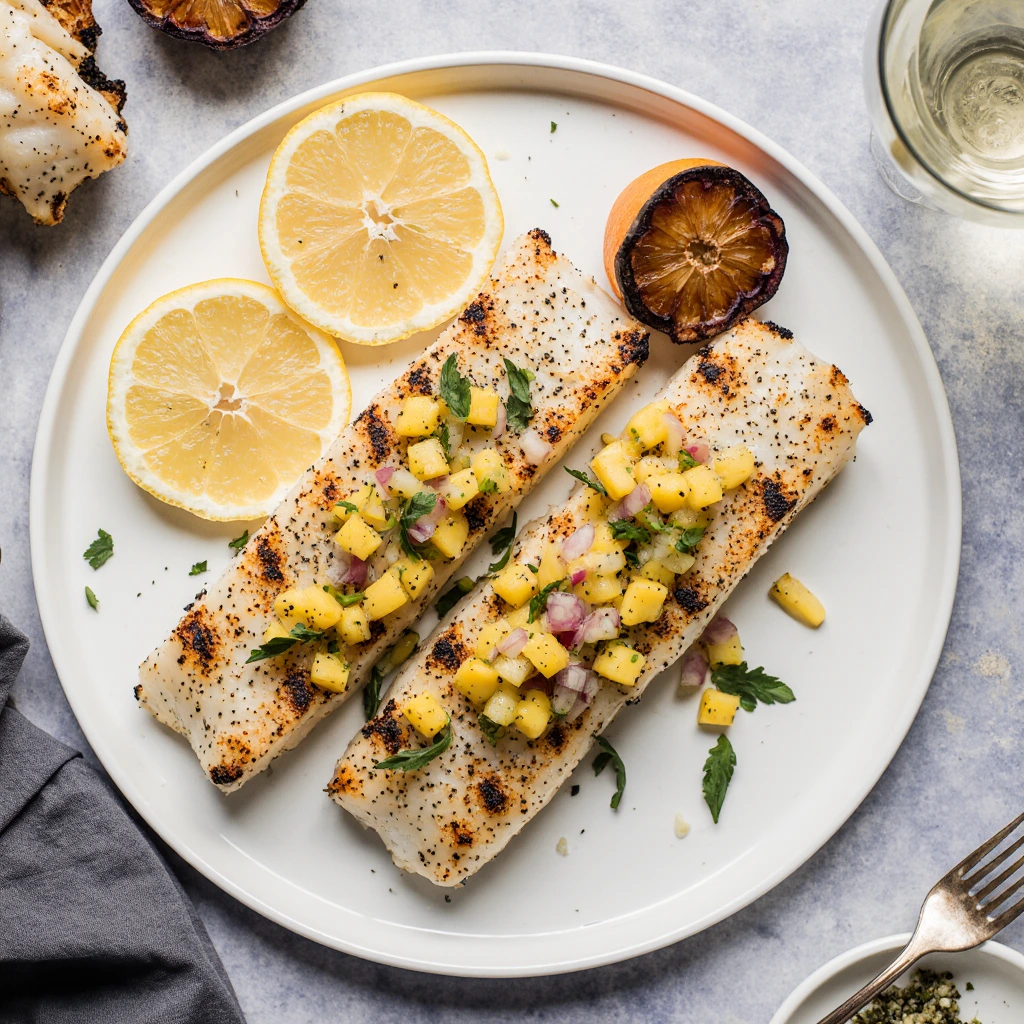
FAQs
How can I determine if my halibut is cooked properly without overcooking? Properly cooked halibut will reach an internal temperature of 145°F and exhibit opaque coloration throughout with easy flaking when tested with a fork. The fish should maintain moisture and firm texture rather than appearing dry or falling apart when handled gently.
What should I do if my grill temperature is too high for proper halibut cooking? Create temperature zones on your grill by positioning coals or adjusting gas burners to provide both high-heat and moderate-heat areas. Start the halibut on high heat for initial searing, then move to moderate zones for completion cooking to prevent overcooking while achieving proper doneness.
Can I prepare the cilantro garlic butter sauce in advance? The sauce can be prepared up to four hours ahead and stored in the refrigerator, though the cilantro may darken slightly over time. Gentle reheating just before serving restores the proper consistency and aromatic qualities for optimal presentation.
What are the best halibut thickness specifications for grilling success? Halibut fillets between one and one-and-a-half inches thick provide optimal grilling results, allowing sufficient time for proper searing while preventing overcooking of the interior. Thinner fillets cook too quickly for proper flavor development, while thicker pieces may require indirect cooking methods.
How do I prevent my halibut from sticking to the grill grates? Ensure your grill grates are thoroughly cleaned and properly oiled before cooking. Allow the fish to sear completely on the first side before attempting to flip, as properly seared fish will release naturally from the grates when ready for turning.
Looking for a hearty meal? Try our delicious (beef) recipes, packed with bold flavors and tender cuts of meat.

